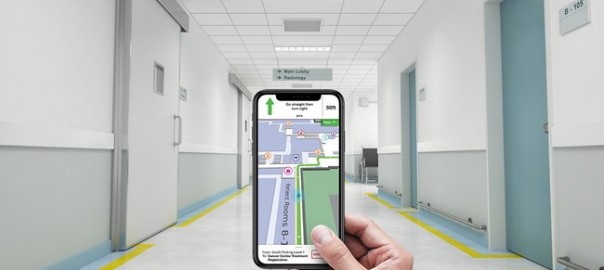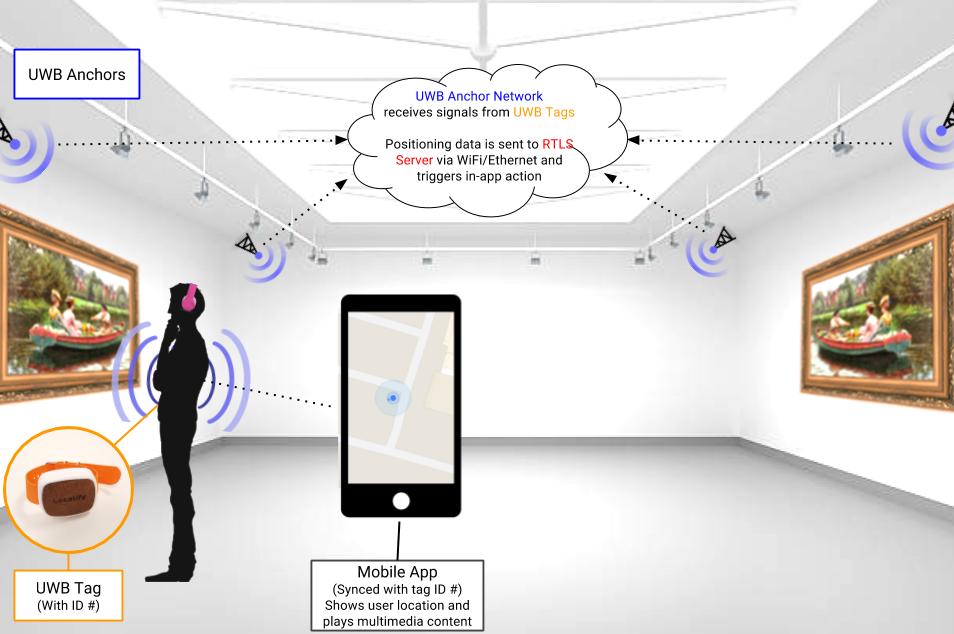GPS can help you get from A to B, but what can it do to enhance your indoor retail experience? Over the next several entries, the Mystic Media Blog will endeavor on a five-part deep dive into the top indoor location technologies and how they will help form the retail experience of the future.
GPS has become ingrained in our everyday lives. Zoomers will never know of a world without GPS, the world of Mapquest and just plain old maps.
While Google Maps, Waze, and Apple Maps can take you from your home to your favorite retailer, finding your way around large stores remains difficult. As a business owner, you want to make the act of navigating the store as easy as possible so that your customers have a positive experience finding what they want. Indoor GPS can solve that problem.
In the past five years, indoor positioning has blown up. The global market for indoor location technology is projected to hit $40.99 billion by 2022, a significant increase from $5.22 billion in 2016. That’s a compound annual growth rate of 42%. With $2.4 billion anticipated in annual spending on beacons and asset tracking by the end of 2020, IPS or Indoor Positioning Systems are here to stay.
Here are the top IPS technologies in use today:
BLE 5.1 BEACONS
Bluetooth Low Energy Beacons are tiny battery powered devices that can connect to bluetooth-enabled devices like smartphones.
When it comes to indoor positioning, the more precise the positioning, the larger the investment required to achieve it. Bluetooth Low Energy beacons have become a technology stack because they require relatively inexpensive hardware to achieve an accuracy of up to 1-3 meters. BLE 5.1 beacons have improved upon that, providing 1-10 centimeters of accuracy with minimal lag.
BLE is extremely power efficient and cost-effective, minimally draining a phone’s battery when connected, and can be used within WiFi access points or lighting infrastructure. Since they infrequently require maintenance, they are often used in high-traffic venues.
ULTRA-WIDEBAND (UWB)
Ultra-wideband (UWB) is a radio technology utilizing low power consumption for a high-bandwidth connection. UWB has extremely precise locating abilities, dialing in to locate objects within one centimeter.
In September 2019, Apple announced the iPhone 11 includes a “U1” chip with UWB technology; however, UWB technology is currently not widely available. Many consider it to be the future of indoor positioning technology, but the lack of existing infrastructure will likely delay mass adoption. Regardless, for applications like warehouse tracking where ultra-precise positioning is required, UWB is an ideal solution.
RFID TAGS
RFID stands for Radio Frequency Identification. RFID is a simple technology with a tag and a reader. The reader extracts data from the tag using radio-frequency electromagnetic field and identifies the object the tag is attached to.
Although RFID is often used in combination with other technologies for more precise indoor location, the market for RFID is gradually increasing. It’s currently slated for growth in the apparel and shoes space, with great potential in other markets such as healthcare and automotive.
AR-BASED NAVIGATION
Indoor navigation utilizing Augmented Reality technologies can do more than just help you navigate a store, it can totally revolutionize the retail experience. AR can create virtual paths and arrows to help navigate the store. For businesses, AR can improve internal processes by making it easier for staff to navigate offices and warehouses.
This technology is enabled by placing visual markers which can be scanned by the users using their mobile device’s camera. The phone will then guide the user through the retail experience and can be customized to help them find what they need.
In May 2019, the number of AR-enabled devices around the world reached 1.05 billion. Apple and Google are actively working on improving ARKit and ARCore, their AR software development frameworks. Beyond simply helping customers and staff navigate stores, AR will pave the way for personalized shopping experiences unlike any we’ve seen before.
CONCLUSION
While BLE Beacons are currently the leader in the marketplace, many technologies are competing to pioneer the most advanced and accurate indoor location technologies. Given the countless applications, the future is looking bright for indoor location applications! Tune into our next indoor positioning blog when we take a deep dive into BLE 5.1 beacons.




